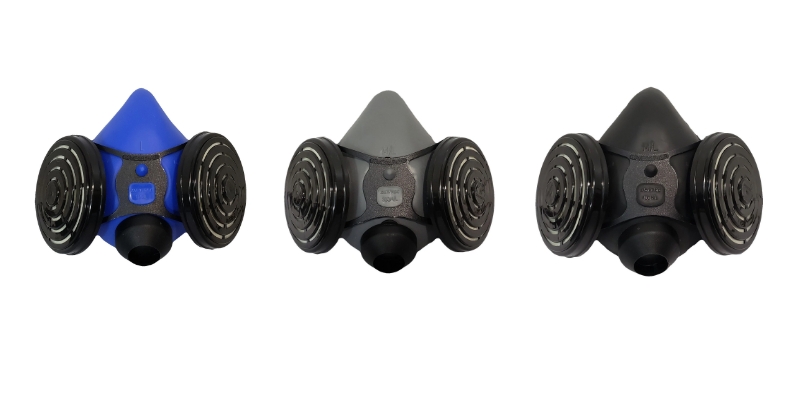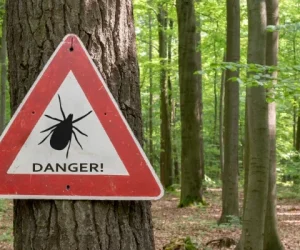As wildfire seasons in Canada become longer and increasingly severe, the risk of exposure to harmful smoke also rises, posing significant health threats to thousands of people across both countries.
Here are five crucial things you must know when it comes to wildfire smoke and at the end of the list, we’ll explain how our Comfort-Air® reuseable respirators can help protect you and your loved ones.
1. Exposure to Wildfire Smoke Has Serious Health Effects
Smoke from wildfires significantly impacts our air quality. Not only is the air quality in the immediate vicinity of the wildfire affected, but also in areas up to thousands of kilometers away. Exposure to this air pollution can have serious health implications.
According to a Health Canada study, titled Human Health Effects of Wildfire Smoke, it is estimated that between 2013 and 2018, air pollutants in wildfire smoke contributed up to 240 deaths each year due to short-term exposure and 2,500 deaths each year due to long-term exposure. During this period, exposure to wildfire smoke also contributed to non-fatal health outcomes such as asthma, heart conditions, and other respiratory conditions.
2. Wildfire Smoke is Toxic and Full of Pollutants
Wildfire smoke is made up of a mixture of gases and fine particles produced by the burning of vegetation, building materials, and other organic matter.
The following components are typically found in wildfire smoke:
- Fine Particulate Matter (PM2.5)
- Ozone (O3)
- Methane (CH4)
- Sulphur Dioxide (SO2)
- Nitrogen Dioxide (NX2)
- Carbon Monoxide (CO)
- Volatile Organic Compounds (VOCs)
- Polycyclic Aromatic Hydrocarbons (PAHs)
Fine particulate matter poses the greatest health risk from wildfire smoke. These microscopic particles are invisible to the naked eye and have been associated with a variety of health issues.
3. The Air Quality Health Index (AQHI) is an Important Tool
The Air Quality Health Index (AQHI) is a tool designed for assessing air quality risks. It provides an easy-to-understand measure of air pollution levels and their potential health effects.
The AQHI helps people make informed decisions by providing timely information. It offers current hourly readings and forecasts for today, tomorrow, and the following day.
The AQHI uses a scale from 1 to 10+, where higher numbers indicate greater health risks associated with poor air quality. The categories are as follows: 1-3 (low health risk), 4-6 (moderate health risk), 7-10 (high health risk), and 10+ (very high health risk). The AQHI is calculated based on the health risks of three common pollutants: Ozone at ground level, Particulate Matter (PM2.5 and PM10), and Nitrogen Dioxide.
Check your local AHQI by visiting the Local Air Quality Health Index.
4. Reducing Exposure to Wildfire Smoke is Critical
During heavy wildfire smoke conditions it’s critical to take precautions. Start by limiting the time spent outdoors during these conditions. While outdoors, if you experience symptoms such as coughing or shortness of breath, reduce or stop outdoor activities.
If you must stay inside during a wildfire, it is important keep the indoor air as clean as possible. Do this by keeping the doors and windows closed, ensuring the ventilation system uses high-quality filters, using a certified portable air cleaner, and limiting the use of exhaust fans. Also, remember to regularly change the filters in the ventilation system as required to maintain effectiveness.
When driving, it is advisable to keep windows closed and set the ventilation system to recirculation mode. Periodically turn off recirculation mode to allow the air inside to refresh and prevent carbon dioxide build-up.
5. Wildfire Smoke Requires High-Grade Respiratory Protection
When outdoor activity is unavoidable, wearing a properly fitted NIOSH-certified N95 respirator mask can help reduce exposure to the fine particulate matter present in wildfire smoke.
Dentec’s reusable NIOSH-approved Comfort-Air ® half-mask respirators reduce fine particulate exposure. These respirators can be fitted with N95 filters, that filters 95% of the particulate or P100 filters, which filter 99.97% of the particulate. Additionally, these respirators are designed for comfort and long-term use, making them an economical and effective choice for personal protection.

For greater protection, Dentec offers the Comfort-Air ® full-face respirators that cover the entire face, including the eyes, nose, and mouth. They offer superior protection against harmful airborne particles, gases, vapors, and other contaminants.

Wildfire smoke poses a serious health risk, but with the right precautions, you can protect yourself and your family. Understanding the risks, staying informed through the AQHI, and using reliable protection like Dentec Safety’s reusable NIOSH-approved Comfort-Air® half-mask and full-face respirators can significantly reduce your exposure to harmful wildfire smoke. Stay safe and breathe easy with Dentec Safety.
Dentec Safety is a leading manufacturer and distributor of safety products in the North America since 2004. Dentec Safety is dedicated to providing the highest quality safety products and solutions delivering enhanced value and comfort. Our expertise from decades of experience in Industrial Safety and our innovative design technologies have solidified us as thought leaders in the field. Protection and comfort are at the core of everything we do at Dentec. As a leading manufacturer of Safety Solutions, it is our mission to help organizations do the right thing, keep their employees safe and exceed Industry Health & Safety Standard.








